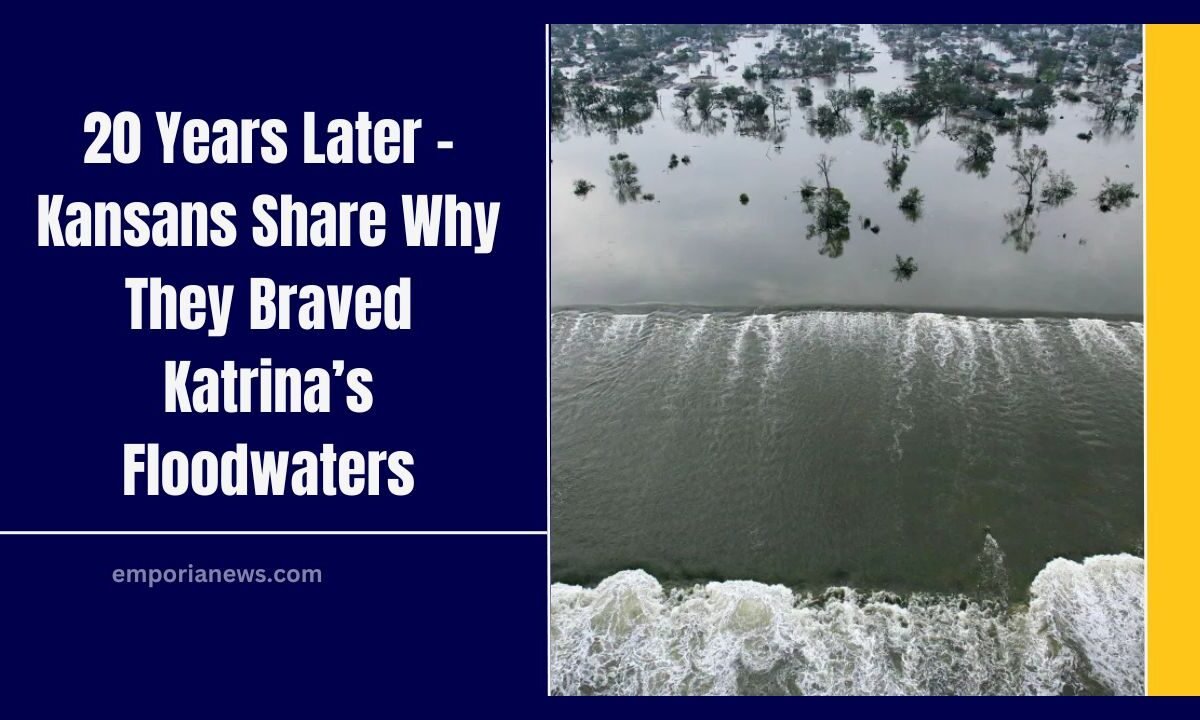August 25, 2005, marked the landfall of Hurricane Katrina, unleashing one of the most devastating storms in U.S. history.
Its impact rippled beyond the Gulf Coast, reaching as far as Kansas, where individuals—motivated by journalism, family bonds, and compassion—took extraordinary steps to cross into the chaos and floods.
Individual Journeys: Courage Across States
| Individual | Why They Went | Journey Challenges | Impact of Arrival |
|---|---|---|---|
| Kevin Stebral | As a photojournalist, he wanted to show donors their aid in action | Over 24 hours by car, truck, and boat | Documented flood’s human impact |
| Robert Bunner | To reach his 7-year-old daughter in flooded Gautier, Mississippi | Navigated hundreds of flooded miles; saw tugboats inland | A tearful reunion illuminated personal triumph |
| Others (journalists, volunteers) | To help, inform, connect | Dangerous conditions, downed lines, submerged roads | Relief, visibility, empathy across communities |
Motivations Behind Kansas Outreach
1. Bearing Witness and Reporting Back
Photojournalists like Kevin Stebral traversed dangerous terrain to inform donors and the public where their gifts were headed—providing transparency and conveying the human face of disaster.
2. Family Bonds Overcame Chaos
For Robert Bunner, reaching his daughter—whose town was decimated by flooding—was a mission rooted in parental love and a hope to restore some normalcy amid chaos.
3. A Collective Kansas Response
Journalists, volunteers, and supply drivers from Kansas formed a wave of empathy and solidarity—delivering supplies, documenting suffering, and forming lifelines when fate fell apart.
What They Saw—and What Stayed
The conditions along their journeys were haunting:
- Over 80% of New Orleans submerged.
- Tugboats and ocean liners washed inland—signs of nature’s unrelenting force.
- Floodwaters encroached hundreds of miles inland, revealing the storm’s inland reach and severity.
- Helicopters hovered overhead, conducting search and rescue as makeshift supply chains strained to begin.
These experiences forged new perspectives—on the fragility of urban infrastructure, on the human cost of catastrophe, and on the power of cross-state collaboration.
Why Kansas Still Carries the Weight
- Compassionate Action: Stepping forward—journalistically or personally—was emblematic of Kansas’ enduring humanitarian spirit.
- Community Connection: Even distant residents felt a deep connection and responsibility when tragedy struck—recognizing a shared national responsibility.
- Memory as Motivation: Today, these stories remain essential in teaching why geography doesn’t limit emotional reach.
Two decades after Hurricane Katrina flooded 80% of New Orleans and fractured countless lives, Kansans continue to reflect on why they ventured into the deep waters.
Whether driven by truth, love, or service, their actions spotlight a remarkable legacy of courage and solidarity.
Their memories—of treacherous roads, submerged cities, and tearful reunions—remind us all that disasters test more than infrastructure—they test our humanity. And Kansas answered with open hearts.




